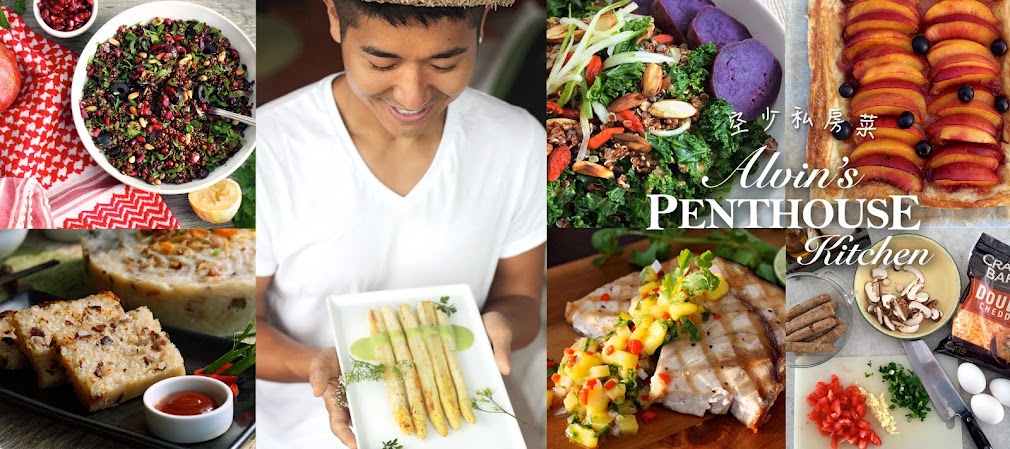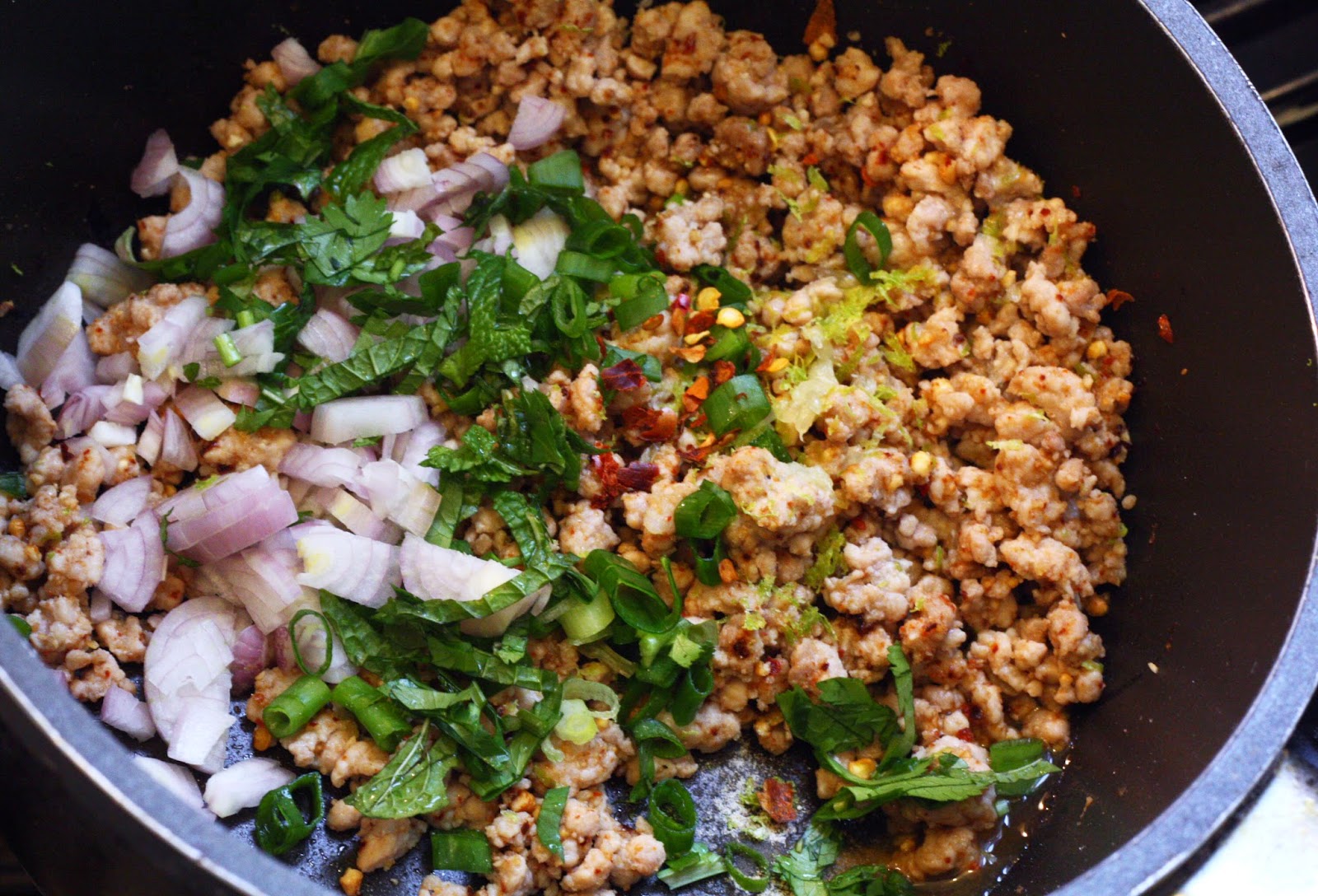Whenever I visit Bangkok, I always come home loaded with fresh lemongrass, Thai chilis, limes and pea eggplants, to name just a few. When out of stock, I turn to my petite Thai and Indonesian grocery shop at the wet market - a godsend, really - that stocks up on the essentials, catering mainly to expats and domestic helpers.
 |
| Savory, sweet, silky, loaded with Thai herbs and a hint of heat |
This Tom Kha Gai was served as part of my four-entree Thai-themed dinner party earlier this month. Check out Larb Moo (Thai Spicy Ground Pork Salad) for a simple, tasty "starter"! Happy Thai New Year!
To prepare...
2-3 boneless, skinless chicken thighs, sliced
2 cup coconut milk
2 cup water
2 stalk lemongrass, sliced at a bias
2 inch galangal, sliced at a bias
4 kaffir lime leaves
2-4 Thai bird's eye chilis (to taste)
1 medium onion, or 3-4 shallots, sliced into wedges
3 Thai tomatoes, cut into wedges, or 7-8 whole cherry tomatoes
A handful of Thai pea eggplants, sliced (optional)
A handful of fresh oyster mushrooms, split into smaller pieces as desired
A handful of fresh straw mushrooms, cut into wedges as desired
2 tablespoon fresh lime juice (or to taste)
2 tablespoon fish sauce (or more, to taste)
1 teaspoon sugar (to taste)
Pinch of salt
A small bunch of cilantro, reserving some for garnish
A light drizzle of chili oil, for garnish (optional)
1. On medium heat, add coconut milk and water to a pot, add galangal, lemongrass, and onion, gently cook until fragrant. Just before the mixture comes to a boil, add in chicken, and lower heat to a simmer.
2. Lightly crush the chilis with a few gentle whacks using a knife, then add directly to the soup. Go ahead and tip in the mushrooms and Thai eggplants, if using. Give the soup a gentle stir.
3. As the soup is just about to boil, add in the tomatoes and continue to simmer. Take the kaffir lime leaves, break and loosely tear them with your hands, and drop directly into the pot. Doing so will help release the fragrance.
4. Season with a pinch of salt and sugar, then season with fish sauce to taste. Gently stir on a low simmer, 5-7 minutes, to ensure that the ingredients are fully cooked, without overcooking the coconut milk.
5. Turn heat off. Squeeze in the lime juice and taste test until the seasoning is just right. Finally, add cilantro to the soup and finish with a scant drizzle of chili oil (optional).
[Any comments? Write to me! Check out my Facebook Fan Page and follow me on Instagram @alvinckl]







